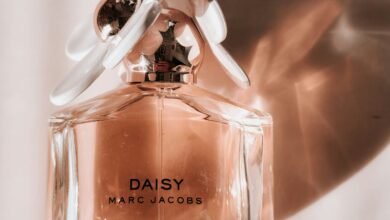Will Mytheresa’s acquisition of YNAP create a leader in digital luxury?
Mytheresa’s strength lies in its commitment to curation and exclusivity, qualities that helped it carve out a niche in the competitive world of high-end fashion. But Yoox’s appeal is rooted in access and discount – a very different proposition

Register to get 1 free article
Reveal the article below by registering for our email newsletter.
Want unlimited access? View Plans
Already have an account? Sign in
Mytheresa’s acquisition of Yoox Net-A-Porter will bring together Mytheresa, Net-A-Porter, Mr Porter, Yoox, and The Outnet under the banner of LuxExperience – a new entity aiming to create “a global leader in digital luxury retail”. But as Chris Camacho, the chief executive of Cheil UK, points out: “Can you create a luxury powerhouse by simply bolting brands together?”
On paper, the deal looks powerful. The combined company will have scale, brand recognition, and a broad customer base. But Camacho is here to remind us, “Scale alone does not win in luxury. Experience does. And integrating this many platforms, each with their own identity, tone and loyal following, without losing what makes them special, is a monumental challenge.”
Luxury consumers demand more than a wide selection of products; they seek a curated, personalised experience that reflects the distinct identities of the brands they trust. Mytheresa’s reputation rests on curation, exclusivity and impeccable service. Yoox’s appeal, meanwhile, is based on access and discount – a very different proposition. “The idea of creating ‘synergies’ between such different propositions is optimistic at best.”
Still, if the integration succeeds, the rewards could be immense. The challenge is how to integrate these disparate models into a unified experience without diluting the unique appeal of each brand.
LuxExperience could be running the risk of becoming a generic digital department store, where the soul of each brand is sacrificed for operational efficiency. “Luxury customers do not care about operational efficiencies,” says Camacho. “Thet care about emotion, brand alignment and service that feels tailor-made.” If LuxExperience loses sight of this, it could fail – no matter how large it becomes.
Jenny Williams, planning director at OLIVER, agrees that, by consolidating such a broad portfolio of brands, the group could lose the emotional connections that consumers have with these names. “The critical challenge lies in harmonising these brands’ cultural resonance and curation while adapting to shifting consumer priorities,” she adds.
Still, if the integration succeeds, the rewards could be immense. The challenge is how to integrate these disparate models into a unified experience without diluting the unique appeal of each brand. “If they get the integration right, this could reshape the digital luxury landscape,” Camacho believes.
Williams once again echoes this emphasis on nuance. While the merger gives LuxExperience the scale to attempt becoming a leader in luxury digital retail, she argues, “it’s not just about scale – it’s about how quickly LuxExperience can build a brand of its own that successfully speaks to the luxury shopper.”
Meanwhile, the competition is not standing still. LuxExperience may step into a leadership role as Farfetch and Matches reposition themselves.
Drawing parallels to the “house of brands” model used by department stores, Williams adds that “navigation within the site will be key,” ensuring that shoppers can both find what they are looking for and discover new brands in a way that feels intuitive and exciting.
Meanwhile, the competition is not standing still. LuxExperience may step into a leadership role as Farfetch and Matches reposition themselves, but as Mercer highlights, “the real battle may be with the growing dominance of direct-to-consumer models.” Top luxury brands – from Louis Vuitton to Hermès – are investing heavily in their own direct digital channels, seeking to maintain control over brand narrative, pricing and customer relationships.
This evolving landscape offers LuxExperience a chance to lead by curating shopping journeys not around brands alone, but around broader aesthetics – from so-called ‘quiet luxury’ to ‘post-cyberpunk’. Leveraging Net-A-Porter’s early editorial expertise, YNAP’s AR innovations, and Mytheresa’s AI-driven personalisation could create differentiated, phygital experiences that modern luxury shoppers increasingly demand.
Yet the competitive landscape is tightening. Tom Mercer, managing director of ExecuteConsult, warns that success “is not just about consolidation. It’s about coherence.” In other words, this means the merger of distinct platforms, each with its own tech stack, tone and curation style, without diluting the consumer experience. Mercer is of the opinion that this could be extremely difficult to pull off.
Meanwhile, the competition is not standing still. LuxExperience may step into a leadership role as Farfetch and Matches reposition themselves.
Much is made of the potential for operational synergies, but as Mercer points out, “Luxury is a space where standardisation can backfire. Consumers expect a tailored, elevated experience.” If the integration process focuses too much on operational synergies and not enough on preserving the emotional and experiential appeal of each brand, LuxExperience could fail to meet the expectations of its discerning customer base.
Meanwhile, the competition is not standing still. LuxExperience may step into a leadership role as Farfetch and Matches reposition themselves, but as Mercer highlights, “the real battle may be with the growing dominance of direct-to-consumer models.” Top luxury brands – from Louis Vuitton to Hermès – are investing heavily in their own direct digital channels, seeking to maintain control over brand narrative, pricing and customer relationships.
Teemu Suviala, global chief creative officer at Landor, agrees that the opportunity is significant, but cautions that success depends on executing with cultural sensitivity and a laser-sharp brand promise. He says: “They need to tailor their offerings to different cultures, particularly in Asia, which is showing the most potential for luxury growth. Africa is also an emerging market they can’t ignore.”
Suviala also stresses the importance of resisting homogenisation. “Given the increasing consumer demand for unique brands, and experiences, a lack of versatility and a tendency to homogenise would be a significant risk, ” Suviala adds. The advice to extract from this is: LuxExperience must simultaneously streamline its operations while maintaining distinctiveness across platforms.
Looking beyond 2025, Suviala sees luxury e-commerce shifting toward hyper-personalisation driven by AI and multimodal devices like smart glasses and headsets. Those who can confine technological sophistication with cultural relevance, creativity, and accessibility will thrive. Luxury’s future, he argues, will be defined “not only by exclusivity and high prices but also by cultural understanding, community building, and clear, consistent brand promise”.
First, as more luxury brands embrace direct-to-consumer models, the traditional multi-brand marketplace may continue to shrink – as Suviala suggests.
Ultimately, the success of LuxExperience will depend on how it balances these competing interests—offering a broad selection while maintaining an intimate, personalised shopping experience for consumers, and preserving the unique identities of its brand partners while leveraging the power of collective scale.
Looking ahead to 2025 and beyond, the future of luxury e-commerce may be defined by a few key trends that LuxExperience must navigate. First, as more luxury brands embrace direct-to-consumer models, the traditional multi-brand marketplace may continue to shrink – as Suviala suggests. This shift could create a competitive challenge for platforms like LuxExperience, as brands may prefer to bypass multi-brand platforms entirely to retain more control over their customer experience.
Camacho sums it up best: by 2030, he suggests that luxury e-commerce will be dominated by two models – curated multi-brand groups like LuxExperience and brand-owned direct channels. The market will shrink. Online those who master both scale and intimacy will survive.
LuxExperience has the raw ingredients. Whether it can combine them into something greater than the sum of its parts remains the real test.







